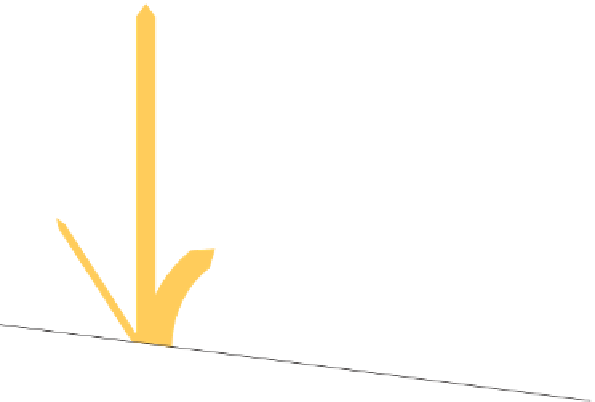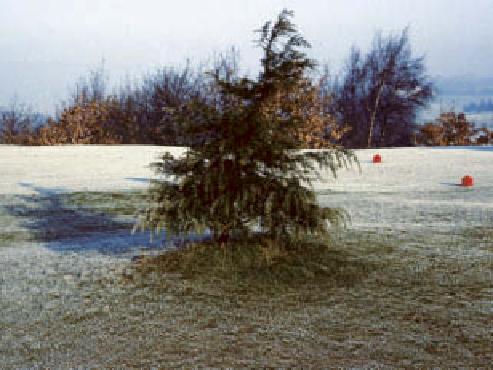Geoscience Reference
In-Depth Information
Slopes at night
At night, when there is no input of short-wave radiation,
the effect of a sloping ground surface on the energy budget
is much less pronounced.
Figure 8.12
shows the exchanges
taking place. The effect of slope direction is through
influencing surface heating during the day, which, by heat
storage, may affect night-time temperatures and hence
emission rates. If the sky is obstructed by trees, nearby
valley slopes or even buildings, much of the long-wave
radiation is absorbed and reradiated back to the original
surface. This reduces the rate of surface cooling. The effect
can sometimes be seen in frosty weather, when open
grassy surfaces are white but beneath trees, or near
buildings where counter-radiation has been greater, there
Of much greater importance at night is what happens
to the air as it cools through contact with the ground
surface. As the air becomes cooler it gets denser. If the
surface is flat the cold air remains at ground level to give
the normal temperature inversion. However, on a slope the
cool air may move downslope as a
katabatic wind
or
density current, increasing in strength and volume until
it meets a physical barrier, such as a wall, or until it is no
longer colder than its surroundings. Once the cold air
stops moving it continues to cool through long-wave
radiation emission and may eventually reach very low
temperatures. This microclimatological effect can be very
pronounced on clear, calm nights which allow radiation
cooling to continue at a high rate. If the cooling is
Plate 8.2
Effects of trees on night-time temperature. The
counter-radiation from the tree branches and leaves.
Photo: Peter Smithson
sufficient for the air to reach saturation we get fog
forming, often in valley bottoms or enclosed basins
One result of this process is the formation of frost
hollows. Farmers always take care that frost-sensitive crops
are not grown where cold air is likely to accumulate and
give ground or even air frosts. It is for this reason that, in
frost-susceptible areas, fruit orchards are cultivated on
valley slopes, allowing the cold air to drain through the
Effective loss of
long-wave
radiation
Absorption of
long-wave radiation
by atmosphere
Counter-radiation
from atmosphere
Sensible
heat
Conduction
Dew
deposition
Figure 8.12
Night-time energy exchanges.
The magnitude of the
components will vary greatly,
depending upon weather
conditions such as cloud
amounts, wind speed and
humidity.
Conduction
from soil
































































































